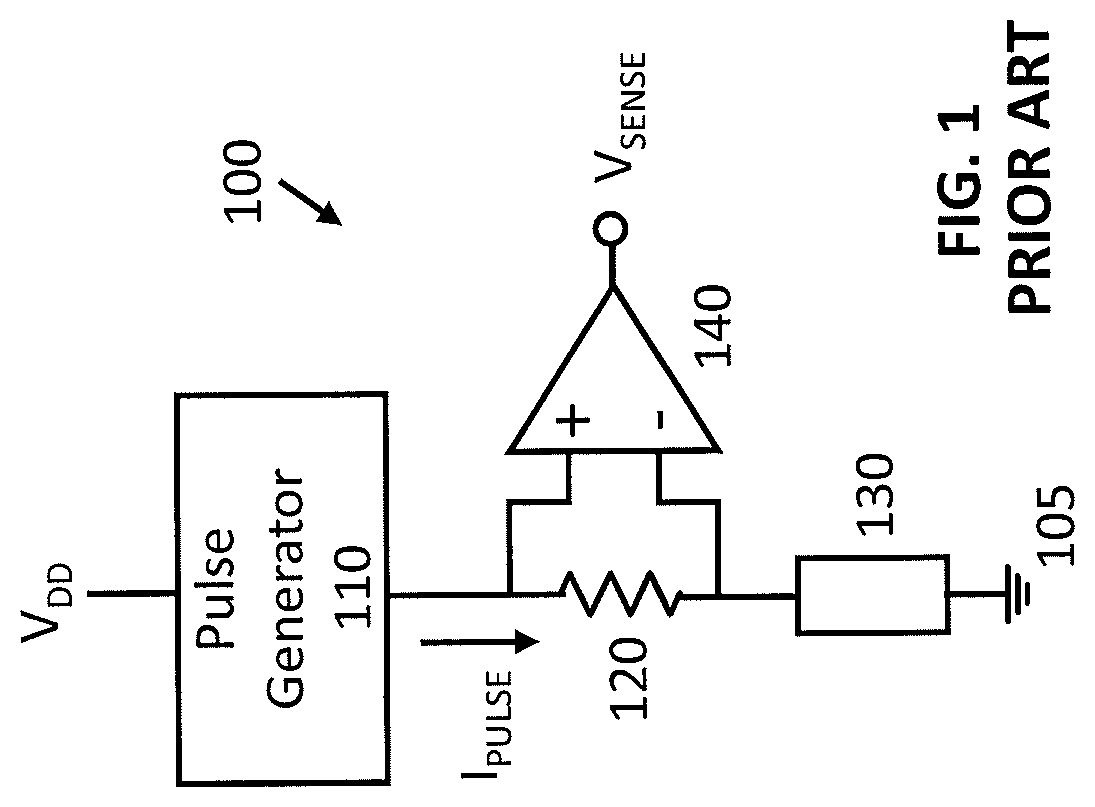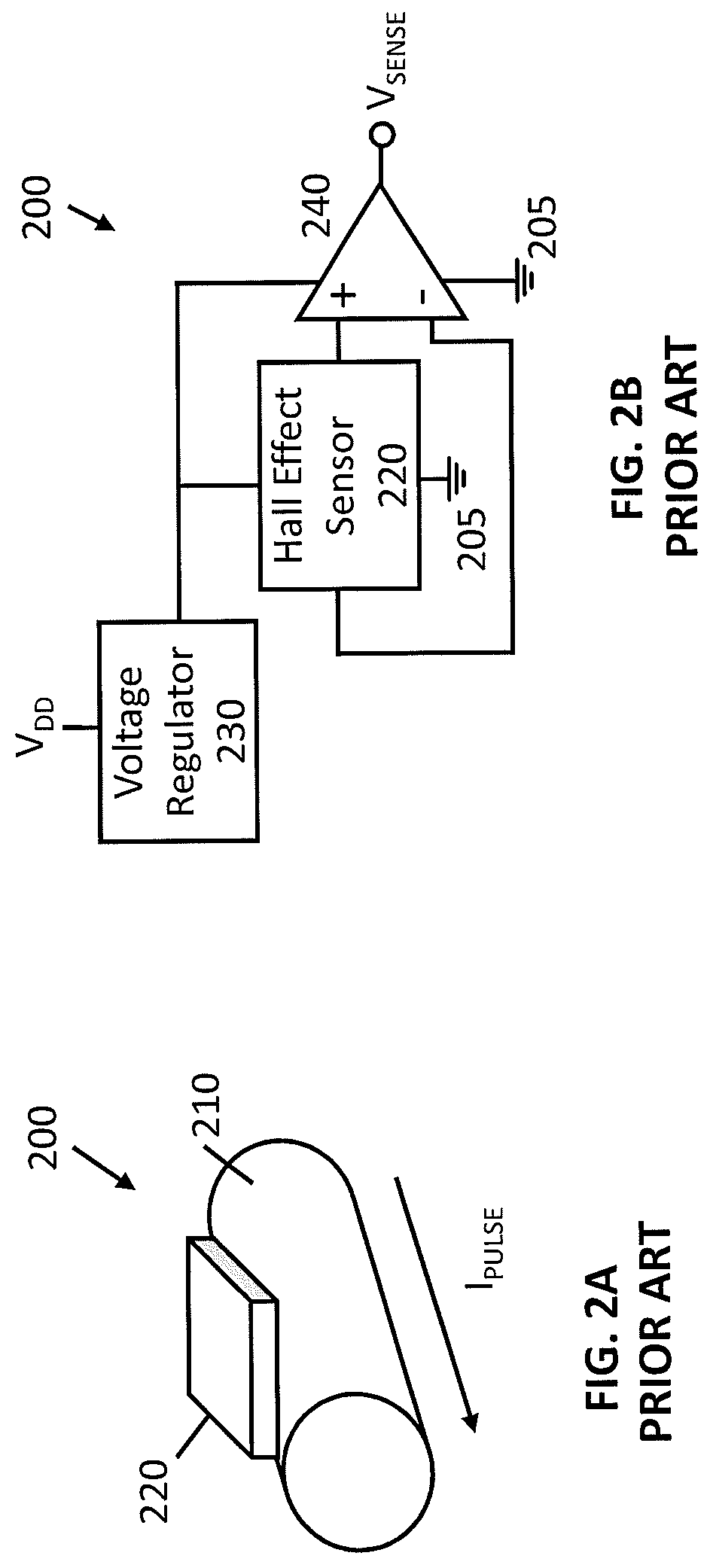Magnetic field pulse current sensing for timing-sensitive circuits
a timing-sensitive circuit and pulse current technology, applied in the direction of magnetic measurements, pulse characteristics measurements, instruments, etc., can solve the problems of affecting the performance of the tof lidar system, its reflection being detectable, peak amplitude, etc., and achieve the effect of reducing the total flux and increasing the total magnetic flux
- Summary
- Abstract
- Description
- Claims
- Application Information
AI Technical Summary
Benefits of technology
Problems solved by technology
Method used
Image
Examples
Embodiment Construction
[0024]In the following detailed description, reference is made to certain embodiments. These embodiments are described with sufficient detail to enable those skilled in the art to practice them. It is to be understood that other embodiments may be employed and that various structural, logical, and electrical changes may be made. The combinations of features disclosed in the following detailed description may not be necessary to practice the teachings in the broadest sense, and are instead taught merely to describe particularly representative examples of the present teachings.
[0025]FIG. 4A shows a graph of a voltage output from a conventional current measurement circuit such as the circuits shown in FIGS. 1-3, and FIG. 4B shows the derivative of the voltage output from the conventional current measurement circuit. Graph 400 shows the output voltage VSENSE from a conventional current measurement circuit over time, where VSENSE is substantially proportional to the current pulse IPULSE ...
PUM
 Login to View More
Login to View More Abstract
Description
Claims
Application Information
 Login to View More
Login to View More - R&D
- Intellectual Property
- Life Sciences
- Materials
- Tech Scout
- Unparalleled Data Quality
- Higher Quality Content
- 60% Fewer Hallucinations
Browse by: Latest US Patents, China's latest patents, Technical Efficacy Thesaurus, Application Domain, Technology Topic, Popular Technical Reports.
© 2025 PatSnap. All rights reserved.Legal|Privacy policy|Modern Slavery Act Transparency Statement|Sitemap|About US| Contact US: help@patsnap.com



